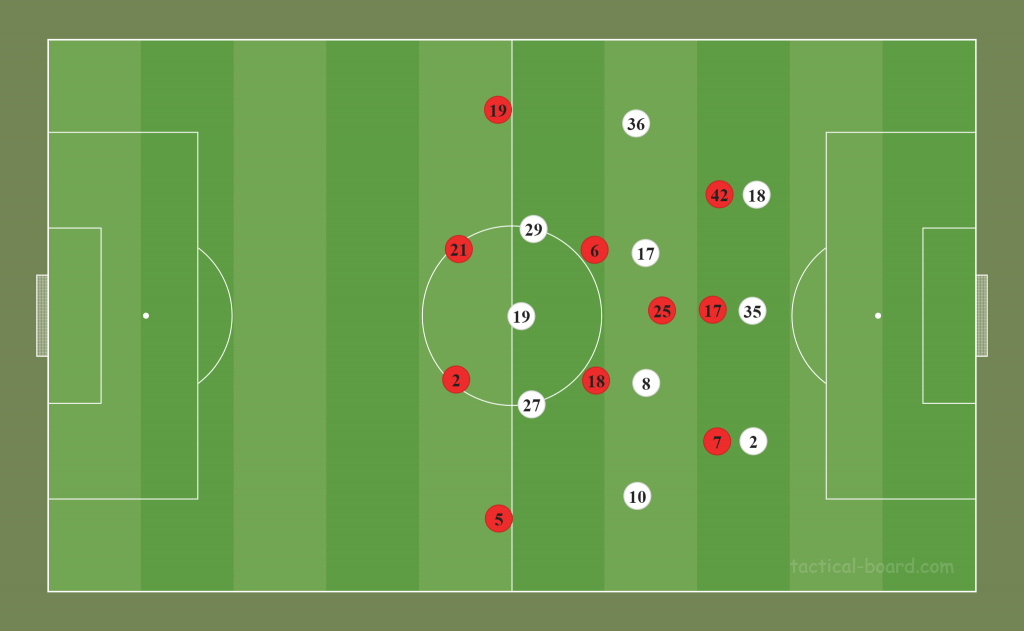
When defending team meets attacking team in set defence and don’t press high and aggressive, wing backs have to take position in defense line.

If you press high, of course wing backs can close to forward and actually they have to. Because if you press high and aggressive, you have to give less time and space to attacking teams’ players as possible as you can. So attacking teams’ players can’t find enough time to think and they could make mistakes. And if they make mistakes, because now they are closer to their own goalpost and also they are so wide, when defending team takes the ball, defending team will have enough space and time to attack. And because they were already closer to goalpost, when defending team takes the ball, they can go to opponent’s goalpost quickly too.
Attacking team was so wide, when they were trying to make game from behind, because to make game under pressure, they had to use all spaces in the pitch. Or they would stuck in little spaces and defending team could press more comfortable against them in little spaces. By the way, if defending team wasn’t pressing high and aggressive, attacking team wouldn’t need to be so wide because this time, with intensitive in central areas, they could make game quickly with short passes.
As I said before, wing backs have to take position in defense line when the defending team is in set defence.
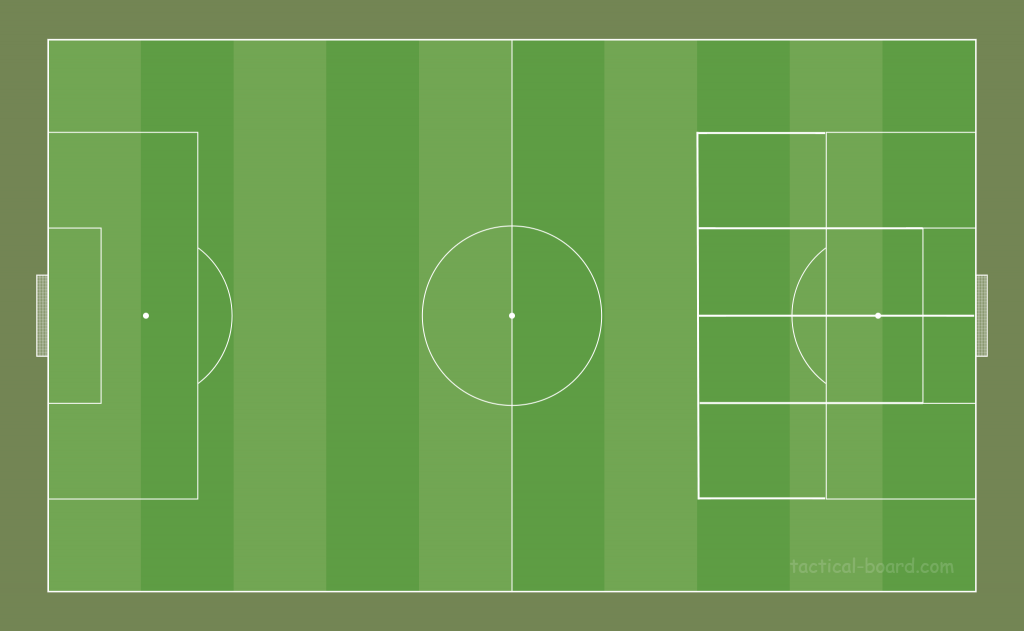
There is a simple explanation for that thing. If wing backs don’t take position in defense line in set defence, 3 stopppers can’t cover all central spaces centre and half-spaces by themselves. It’s all because of the spaces’ bigness. Centre and half-spaces have approximately 40 metres wideness. If we separate centre two pieces, we can say that there are 4 spaces that every one of them is nearly 10 metres. To cover 4 different 10 metres spaces, we can say that we need at least 4 players. If this number would be less, attacking team’s forward players can find spaces in central areas comfortably and quickly and also defending team’s defenders can’t cover forward players because they can’t shift to forward players quickly. And when forward players find enough space and time in forward’s central areas, they can score goal and be effective directly because they are in central spaces.
Let’s look at this match situation. This position is before Bayern Munich’s 5th goal against Eintracht Frankfurt in Bundesliga’s opening match for the 2022/23 season.
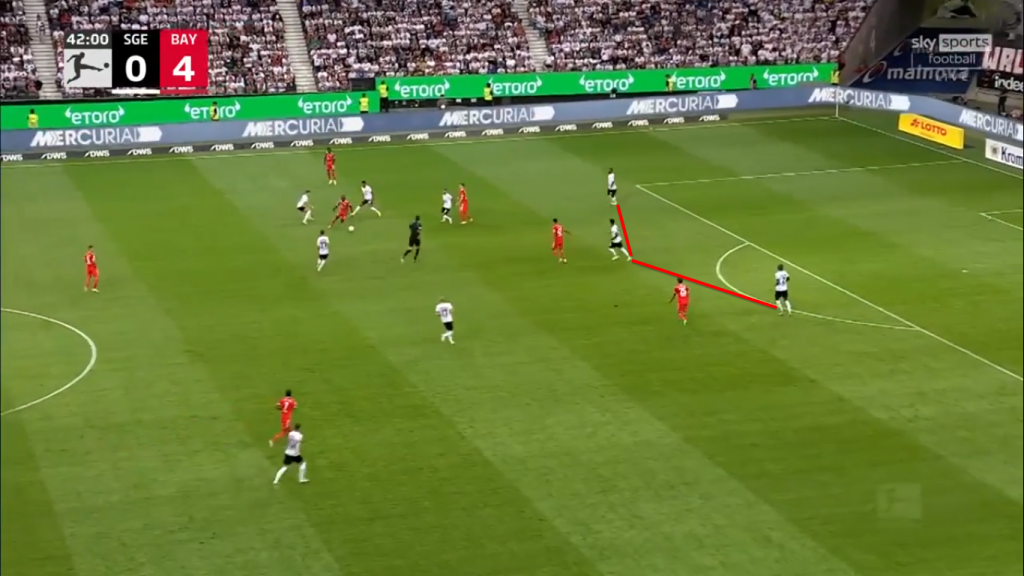
Mane has the ball in Bayern Munich. As you see, in Eintracht Frankfurt’s defense line, there are 3 players. Right stopper is in right half-space because the ball is in right half-space too. And other stoppers take position side by side with right stopper too. So from central spaces, only Eintracht Frankfurt’s left half-space is empty.
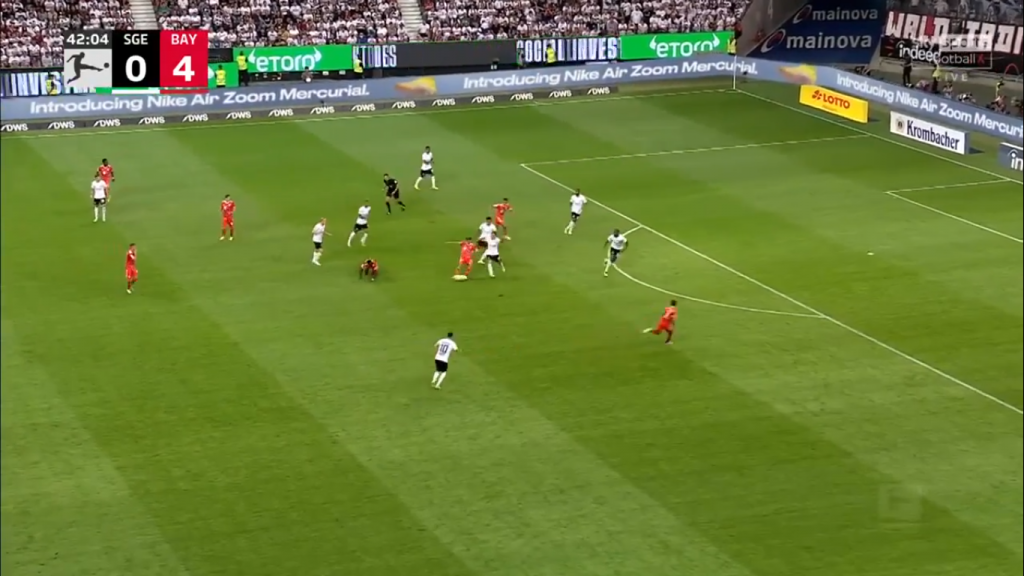
Then the ball goes to Müller. Now Müller has the ball and to Eintracht Frankfurt’s left half-space, Gnabry makes a run.
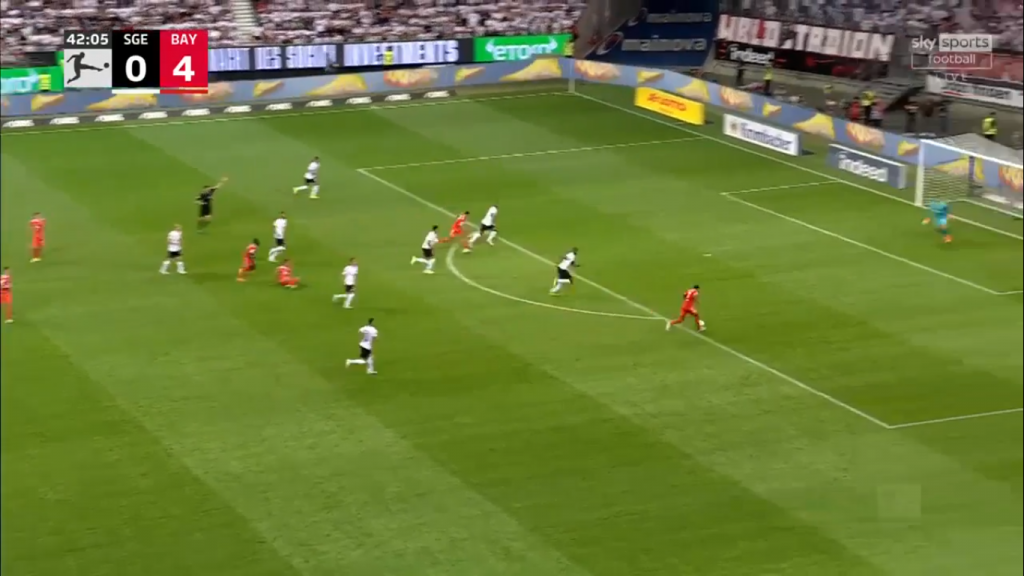
Müller passes to Gnabry and as you see, at the moment of the ball reaches to Gnabry, the distance between left stopper Ndicka and Gnabry is too much to cover Gnabry quickly. So Gnabry can score goal comfortably without disturbing by a defender.
You can ask that why you didn’t talk about covering wings. Because when you have defending players which ones take position in half-spaces, they can shift to wings too. Covering wings directly is not necessary. Because wings are not central spaces. So attacking teams can’t use wings directly to score goal.

